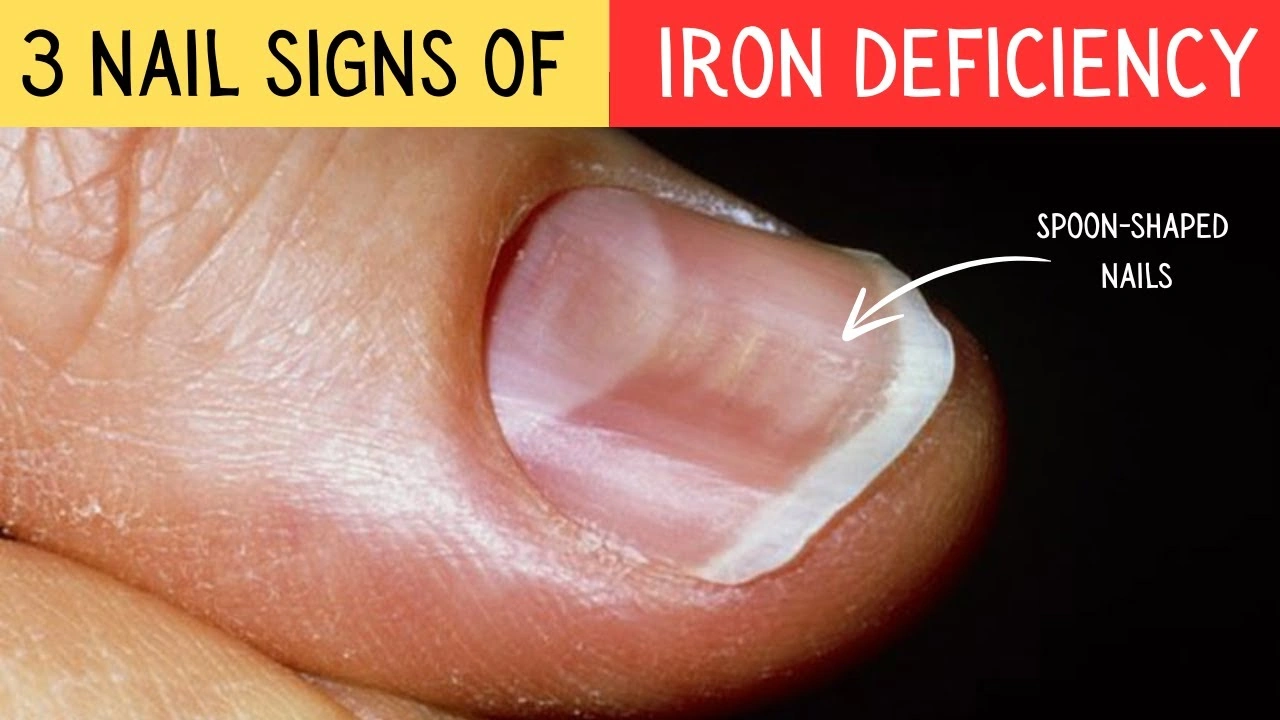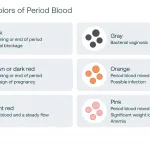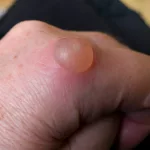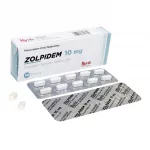
Have You Ever Really Looked?
Here’s a funny thing: We glance at our nails dozens of times a day… Grabbing keys, mindlessly scrolling, picking at a label. But how often do you really look? I mean, stop and notice if your nails are whispering secrets about your health?
I started paying attention after a friend’s comment: “Whoa, did you get gel? Your nails are so… scooped.” (Not a trend, I promise.) Turns out, those little inward curves—and more importantly, what causes them—can be a health clue we’re all missing. That’s where iron deficiency nails pictures come in. Today, we’re doing more than just judging cuticles. We’re cracking the code on what our bodies might be trying to say about iron, energy, and that dry, bendy patch you keep feeling with your thumb. Stick with me, this gets interesting—and, yeah, a bit personal.
Why Are My Nails “Spoon” Shaped?
If you just checked and your nails look sort of scooped, you’re not alone. The technical name tossed around by doctors is koilonychia. (Bless you! …Or, well, that’s the word.) For real, though—it’s a very common symptom of too little iron in your system. In plain speak: spoon-shaped, thin, or bendy nails kind of like the ones you see in iron deficiency nails pictures. You might spot this first as flat nails, but if iron stays low, things get more dramatic—with an indentation smack in the center deep enough to hold a tiny droplet of water. Weird party trick, if it wasn’t so odd-looking according to experts at Cleveland Clinic.
How Does Iron Deficiency Mess With My Nails?
Your body runs on oxygen and nutrients. (Duh, right?) Iron is the VIP here—it helps red blood cells carry oxygen, not just to your muscles, but clear out to your fingertips. When iron drops, everything slows down, including nail growth and the stuff that keeps your nails strong and pink and pretty. Start losing iron, and your nails get soft… then thin… then, surprise, they start curving like the classic iron deficiency nails pictures you’ll see in medical references.
A Real-Life Wake-Up Call
Story time. My friend Sarah (not her real name, but she’s real, I promise) ignored her spooned nails for ages—just figured it was her habit of skipping lunch, lots of running, maybe her heavy periods. But she was also feeling tired, out of breath, and weirdly cold even in summer. One glance at her nails during a regular check-up, and her doctor knew to run an iron test. Boom—classic iron deficiency anemia. A few tweaks to her meals and a supplement later, her nails—slowly—flattened out. Moral? Ignoring your nails is like ignoring your car’s check engine light: it might not be urgent, but it’s definitely telling you something.
Are There Other Causes?
Here’s the twist: Not all spoon nails mean iron trouble. Sometimes it connects to liver stuff (like a thing called hemochromatosis, which is too much iron… yeah, confusing), or other rare conditions. But nine times out of ten, iron is the main player. That’s why doctors care about those “spooning” curves, especially if you feel off in other ways as explained in this StatPearls review.
Anemia Nails vs. Normal Nails—How Do You Know?
It’s hard to tell, right? A chipped nail from that stubborn jar lid isn’t a medical emergency. But, if you compare side-by-side—with a little help from those iron deficiency nails pictures—the differences pop.
What’s Healthy? What’s Not?
Healthy nails are… boring, honestly. They’re smooth, gently curved, and pinkish thanks to happy, well-oxygenated blood underneath. If you check Anemia nails vs normal nails, you’ll see clear visuals of both types. Not so healthy? Look for:
- Pale beds (should be pink, not ghostly white)
- Brittle, split, or thin nails
- Spoon shapes—that’s our headline act
Comparison Table: Nail Health at a Glance
| Feature | Normal Nails | Anemia Nails |
|---|---|---|
| Shape | Flat, gently curved | Spoon-shaped, concave |
| Texture | Strong, smooth | Brittle, ridged, thin |
| Color | Pink, natural hue | Pale, odd yellow |
If you google iron deficiency nails pictures, or peek at your own tips next to that table, it makes the signs pretty obvious. If you see that concavity, it’s a flag.
Wait, Could It Be B12?
Yup, nails are a team sport. It’s not just iron—B12, another important vitamin, is often missing in plant-based diets, people with digestive issues, or as we get older. If both are low, nail problems get… creative. Double the deficiency, double the trouble! That’s why B12 iron deficiency nails dives deeper into how you might spot overlapping clues. I’ve seen people fix iron and B12, and their nails bounce back almost as fast as their energy.
Anecdote: My Own “Oh, So That’s Why” Moment
I once spent six months blaming the dry weather and too much handwashing for my thin, splitting nails. All the while, I was dragging through the day, short of breath, and popping multivitamins on and off. The kicker? One honest look at my nails and a quick blood test later: double whammy—my iron and B12 levels were both on the floor. Thank goodness changing my breakfast (hello, eggs and leafy greens) and a supplement routine made more difference than all the fancy hand creams in the world.
Why Does Low Iron Target Nails?
So, what’s iron actually doing here? Picture your blood as a city subway system. Iron is the train driver, and nails are the very last stop. If there aren’t enough trains (iron), passengers (oxygen and nutrients) get delayed. Your nails are the first to miss out; they’re not as important (in survival terms) as your heart or muscles, so they show the effects early. The result? Slow-growing, thin, eventually spooned nails, exactly like those iron deficiency nails pictures medical sites share.
Other Sneaky Symptoms
This is where it gets a little buzzwordy, but hang in: fatigue, headaches, brain fog, cold hands and feet, even weird cravings for ice (yes, ice!), and restless legs… all team up with those nail warnings. Sometimes, Anemia nails vs normal nails articles go more into these body-wide signals. Bottom line: the nails are just one part of your body waving a flag.
Hidden Causes You Might Not Think Of
Besides skipping red meat or leafy greens, blood loss from heavy periods, hidden tummy troubles like celiac disease, or even certain meds can drop your iron. Sometimes, it’s just a bad year for nutrition. I chatted with a marathon runner who shrugged off her exhaustion and spooning nails for months. She blamed training, until a dietitian told her, “This is classic iron deficiency. Spinach and beans, stat!” (Spoiler: She’s much better now, and nails are, too.)
How To Fix Spoon-Shaped Nails (and Feel Better!)
Okay, now for the hopeful part. Most cases of koilonychia—spooning nails—turn around if you fix the iron problem. It’s rarely an overnight miracle (fingernails take months to grow!) but there are things you can do starting, well, now.
First Step: Tune Up Food and Habits
It can be so simple… Eat foods packed with iron (beef, chicken, fish if you eat meat; beans, lentils, leafy greens if you don’t). Don’t forget vitamin C (oranges, bell peppers)—it helps you absorb iron better. For people fixing both, a focus on B12 is key; B12 iron deficiency nails covers all the best combos and recipes. Are supplements OK? Sure—but ask your doctor first, especially if your belly is sensitive or you’ve got other health stuff happening.
Real Results: The Before-and-After “Nail Pic”
There’s nothing like seeing an actual before-and-after photo. Iron deficiency nails pictures show that with steady treatment (think 4–6 months for fingernails… toenails take even longer!), nails go from soft, thin scoop shapes back to steady, flat, hard surfaces. It’s not instant, but it’s real. I’ve compared my own “before peas and eggs” and “after spinach and steak” shots, and, wow.
Daily Iron Hacks: Make It Easy
- Pair leafy salads with some lemon juice or orange—zaps up the iron absorption.
- If you’re vegan or vegetarian, track your iron and B12 (an app or notes work!).
- If a supplement: Take with water, not coffee/tea. Caffeine steals your iron thunder.
Making small changes can really stack up over time. It doesn’t have to be stressful—or perfect.
When To See a Pro
If your nails aren’t flattening out, and you’re still feeling tired… set up a doctor visit. Blood tests are simple and tell you exactly what’s up. Plus, sometimes nail problems aren’t from iron, but from other medical stuff a pro needs to check out as Mayo Clinic’s guidelines suggest.
Treat the Cause, Not Just the Nails
Easy mistake: focusing on the cosmetic fix. Those ridge fillers, shiny polishes, “nail strengtheners?” They might hide the problem, but only iron (and maybe B12, see the handy B12 iron deficiency nails link) fixes it at the root… literally. Treating the underlying deficiency usually brings the nails back over a few months. Bonus? Your energy, focus, and mood all tag along for the ride.
What About the Other Stuff?
If your spoon nails are paired with crazy fatigue, pale skin, or anything that freaks you out: Don’t Google panic. Just ask your doctor. Most likely, with bloodwork and maybe a couple of tweaks to diet and lifestyle (or medicine if you need it), you’ll be back to normal in no time. I love that one doctor told a patient, “Don’t worry, your body’s just sending an early postcard for help. Now, let’s send the rescue iron crew!”
Let’s Wrap Up—And Look Forward
If you’re still reading, high five for caring about your health on the little details. Spoon-shaped nails… brittle tips… odd pale beds… iron deficiency nails pictures aren’t just textbook stuff, they’re your body’s friendly nudge to check in. The good news? Comparing your tips with a guide like Anemia nails vs normal nails helps you spot trouble early, and a few easy changes can fix the core issue before things get serious. When in doubt, double-check iron and B12—see all those clues at B12 iron deficiency nails—and get back to thriving from root to tip. If you’ve noticed anything odd, or if this inspired you to look closer, maybe today’s the day to pick up some spinach or set up that blood test. The sooner you listen to those tiny hints—yep, even in your fingernails—the better you’ll feel, inside and out. Go on, give those nails and yourself a little extra care. What’s the oddest health clue your body’s given you lately? I’d love to hear. Here’s to healthy hands, more energy, and listening closely—even when our bodies “whisper” in spoon shapes.


















Leave a Reply
You must be logged in to post a comment.